Designed for Canon’s RF-mount full-frame EOS R cameras, the Canon RF 135mm F1.8L IS USM is a high-speed, fixed focal length lens for outdoor portraiture, fashion and sports. It features 17 elements, arranged in 12 groups, and three of those elements adopt UD (ultra-low dispersion) type for mitigating chromatic aberration.
As the replacement for the highly regarded EF 135mm F2.0L USM, one significant new feature is the inclusion of optical stabilization. Canon says it offers up to 5.5 stop compensation by itself and up to 8 stops with a compatible IBIS-equipped camera. To reduce ghosting and flare, there’s a combination of Canon’s Super Spectra and Air Sphere coatings and a fluorine layer on the front element to aid cleaning.
Like many other modern Canon lenses, the RF 135mm F1.8L IS USM adopts a Nano USM AF actuator. The Nano USM offers high-speed AF required for stills as well as smooth and quiet focusing for video. There’s also a closer-than-usual minimum focus distance of just 0.7 m (2.3 ft) resulting in a maximum 0.26x magnification.
Externally, the lens has a manual focus collar and a separate control ring for allocating ISO, exposure compensation, shutter speed or aperture as desired. And there are two customizable buttons providing access to one of 47 functions from the camera. With an 82 mm filter thread and weighing 935 grams (2.1 lbs) the lens is substantial but not overly so. It is available now for around $2099 / €2700.
You can view the results for all tested lenses and create your own comparisons and in-depth analyses using our interactive image lens comparison tool.
Key specifications:
- 17 elements with three UD-type in 12 groups
- Nine-bladed, rounded aperture
- Optical stabilization with 5.5 stop compensation (up to 8 stops with IBIS)
- Nano ultrasonic AF motor
- 82 mm filter thread
- Minimum focus distance: 0.7 m (2.3 ft)
- Weight: 935 grams (2.1 lbs)
Test results
We tested the Canon RF 135mm F1.8L IS USM on a 45 MP Canon EOS R5, currently the highest resolution camera in the lineup. Sensor and lens together achieved a DXOMARK score of 53 points, which indicates exceptionally high image quality and is among the best tested of any focal length.
As a high-grade L-type lens, this new version of the popular 135mm focal length has high and consistent sharpness levels across the frame at all apertures. Transmission is another highlight, with the Canon RF 135mm F1.8L IS USM measuring an exceptionally efficient T1.9. This is just -0.1EV below the stated F1.8 maximum aperture value, making this a highly attractive lens for low-light stills and video capture.
It’s always worth looking through the data to see how the lens performs at individual aperture settings and focal lengths. Note the results don’t include any lens profile corrections, so what you see presented here may differ in use with the profiles applied.
In-depth comparisons
After being a popular choice in the film days, the 135mm focal length started to see something of a comeback with the adoption of full-frame digital camera models as the mainstream choice of serious amateurs and professionals. So we’ve compared the new Canon RF 135mm F1.8L IS USM with the $1600 (at launch) manual focus Zeiss APO Sonnar T* 2/135 which was introduced in September 2012. We have also compared the new Canon with the EF-mount predecessor the EF 135mm F2.0L USM. This model was about $1070 when it was released in April 1996, some 27 years ago. Both lenses are highly-regarded models and made for SLRs, and we’ve tested both on the full-frame 50 MP Canon EOS 5Ds R. According to Canon Japan, the slightly lower-pixel count of the 45 MP Canon EOS R5 has practically the equivalent resolving power of 50 MP Canon EOS 5Ds R making the comparisons between the lenses all the more compelling.
You can see an overview of this comparison in our database.
Sharpness
The Canon RF RF 135mm F1.8L IS USM performed particularly well in sharpness (acutance) at all apertures including at the initial aperture. It has exceptionally high sharpness and uniformity across the image field at the initial aperture of F1.8 achieving over 84% acutance in the center, and maintaining over 80% out to the corners. Even the outstanding Zeiss APO Sonnar T* 2/135 can’t quite match that wide-open at F2.0, and while the Canon EF 135mm F2.0L USM is a close enough match for the Zeiss centrally it’s less so in the outer zones. Stopped down to F2.8-4.0, the new Canon RF mount lens remains sharper than the Zeiss and the older EF version and, notably, even manages to maintain a very high 80% acutance across the field. By F5.6 though the Zeiss offers pretty much the same high sharpness levels across the frame as the new Canon and even the EF version is on par centrally, which goes to show just how good that old Canon EF mount lens was.
Chromatic aberration
With three UD lenses in the optical design, the Canon RF 135mm F1.8L IS USM has generally well-controlled levels of chromatic aberration measuring 6 µm on average across the field. However, the Zeiss has much lower levels and even the older Canon EF mount has slightly less fringing on average across the image field, even if it has slightly higher levels than the RF mount version in the corners of the frame. Given the larger F1.8 initial aperture, it’s perhaps not unexpected but while somewhat troublesome with regards to sharpness levels, this colored fringing is relatively easy to remove in post (production) and with out-of-camera JPEGs. Still, if we’re being super picky, it would have been great to see levels a couple of points beneath 5 µm.
Geometric distortion
At this focal length, some geometric distortion is expected and above 50mm so-called “pincushion” distortion, where the corners of the projected image extend, is quite typical. In this instance, the Canon RF 135mm F1.8L IS USM lens has slightly higher levels than both its 26-year-old predecessor and the more recent yet manual focus Zeiss. Nevertheless, the measured 0.2% value is still considered low. Some slight inwards curving of straight lines or man-made edges may be visible running parallel to the border of the frame, but it’s easy to correct in post and isn’t likely to be an issue to be concerned with.
Vignetting (corner shading)
Vignetting is well compensated for on the Canon RF 135mm F1.8L IS USM, which given the size of the objective lens isn’t totally unexpected. In our tests, the new RF mount lens has only moderate darkening or shading of the corners at full aperture and is completely free of any discernible effects by F5.6. However, competition is stiff and the older Canon EF mount version has the lower vignetting of the three at their respective initial apertures — not just at the maximum levels in the corners — but across the field slightly as well. The Zeiss is also well-controlled across the field into the extreme corners, but it has marginally higher levels than both up to that point at the extreme corners. With the Canon RF mount lens at F2.0 though, to match the initial apertures of the others, it has slightly lower levels than both the Canon EF lens and the Zeiss but then they are free of any of the effects by F4.
Transmission
In theory, there isn’t that much between a lens with a maximum aperture of F2.0 and F1.8 — it should be just 0.3 EV — however, in practice that’s not always the case. Measuring the transmission at maximum aperture reveals the real “speed” of a lens and while it’s not a big deal for stills, it’s an important consideration if you intend to use it for filming, particularly when matching with other lenses. We measured the Canon RF 135mm F1.8L IS USM wide open at T1.9, just -0.1 EV “slower” than the theoretical F1.8 maximum aperture value. In contrast, the EF version measured T2.3, which is -0.4 EV “slower” than the new RF mount model. Best of all in terms of transmission was the Zeiss, which measured T2.0, which is the same as the reported initial aperture value, meaning there really isn’t a lot between it and the RF mount lens as the F1.8 maximum suggests.
Conclusion
High-speed 135mm lenses were common in the late heydays of the film era but were gradually supplanted by the convenience and flexibility of the 70-200mm F2.8. With the rising popularity of full-frame digital cameras, especially hybrid models offering video, not to mention the range of dedicated cinema cameras based on the same mounts, the 135mm focal length has seen a something of a revival. As a result, the introduction of the Canon RF 135mm F1.8L IS USM wasn’t unexpected and essentially replaces the highly regarded EF 135mm F2.0L USM, a widely adopted and relatively affordable lens known for its superb handling and optical quality. While handling is outside the remit of our testing, the new RF mount lens has outstanding image quality, particularly in terms of sharpness and uniformity at the initial aperture but also when stopped down as well. With the “faster” or wider initial aperture, 17 element design and optical stabilization there’s a certainly premium to be paid for this new version, but while the price is likely to be widely debated image quality like this never comes cheap.
In this review, we have compared the Canon RF 135mm F1.8L IS USM mounted on a Canon EOS R5 to its closest rivals from other brands. Remember that the lenses may be used on various cameras with different sensors, or in some cases on different camera systems using different mounts, so the results will vary between them.
As usual, you can create your own comparisons and in-depth analyses using our interactive image lens comparison tool.


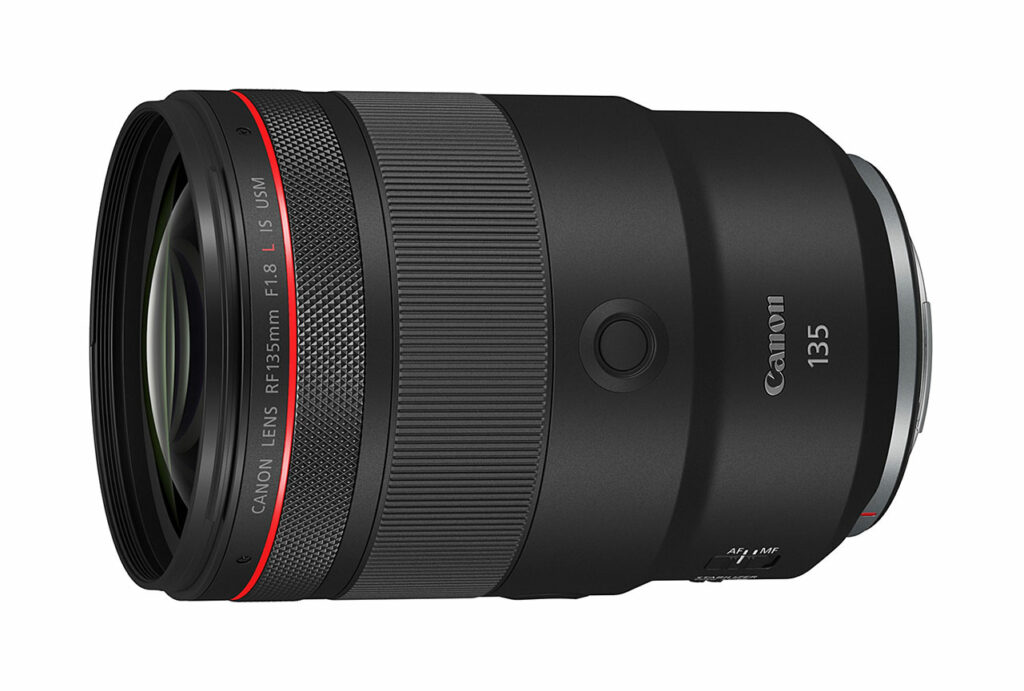


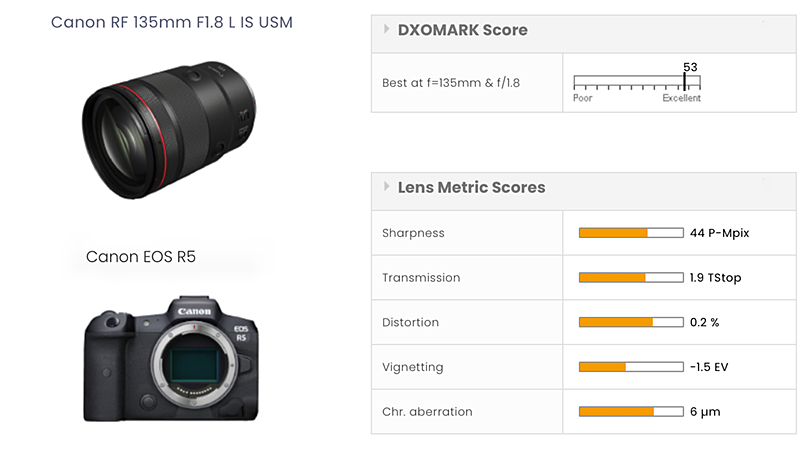

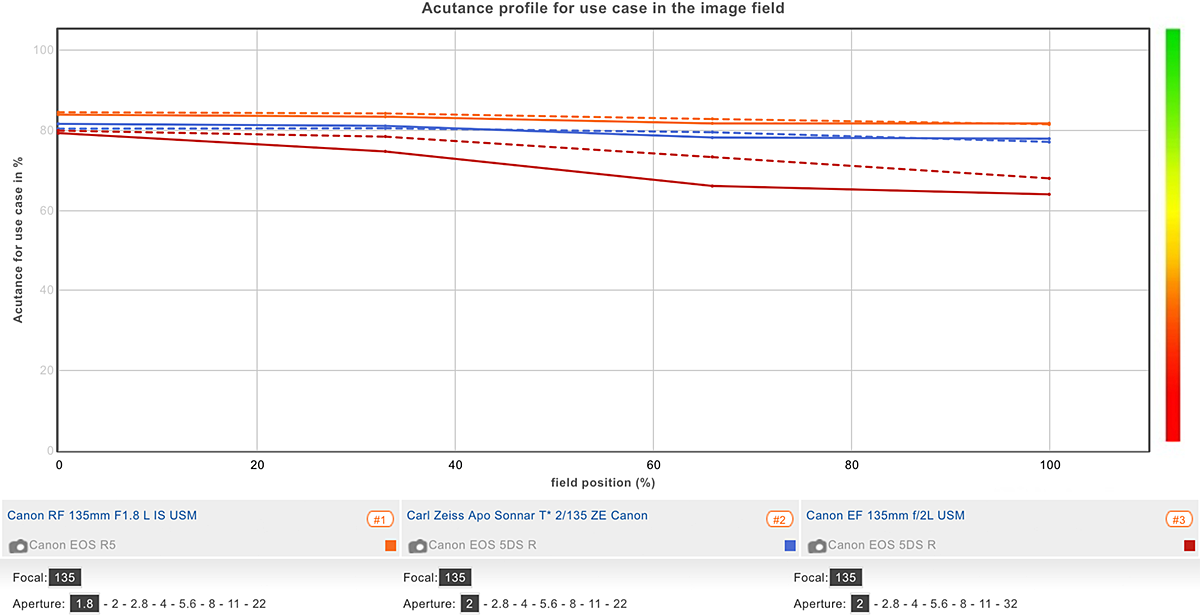
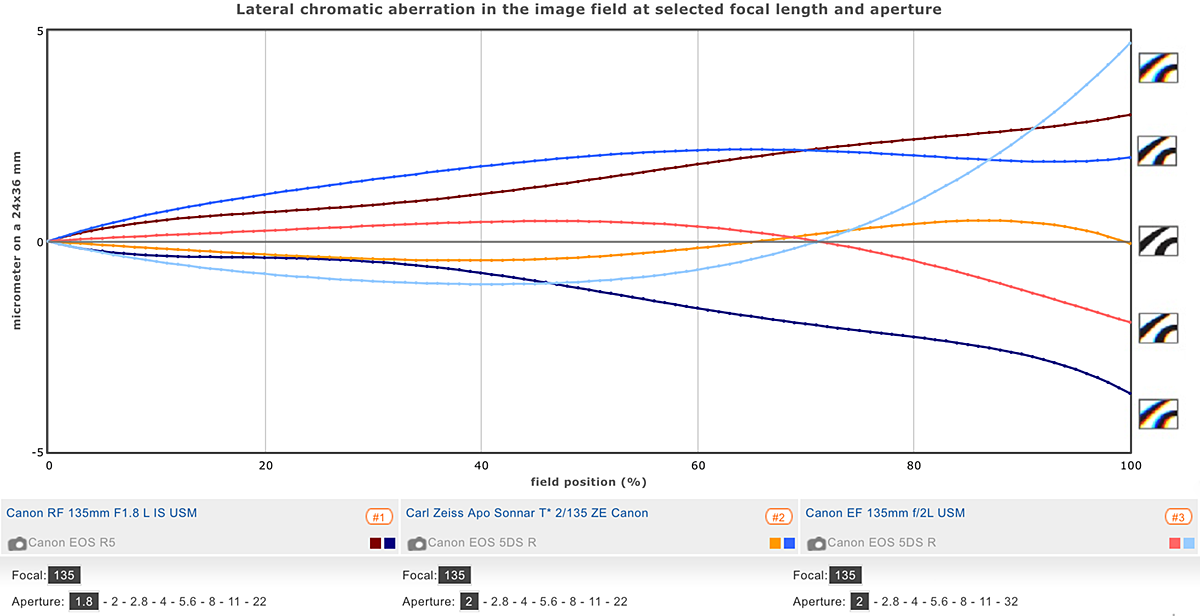
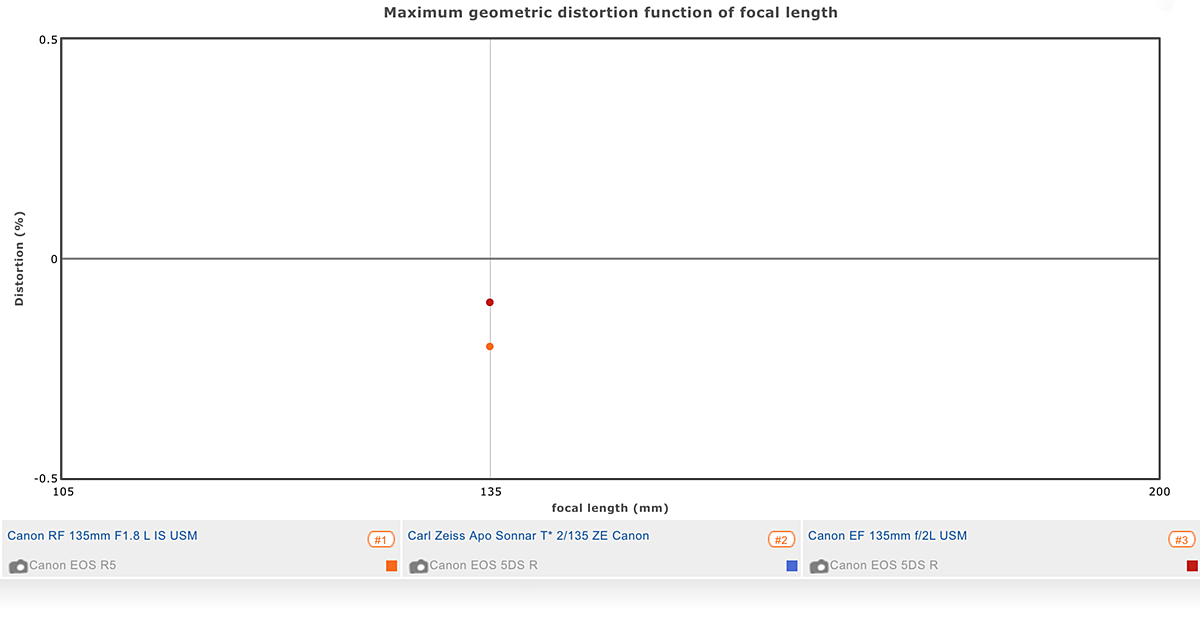
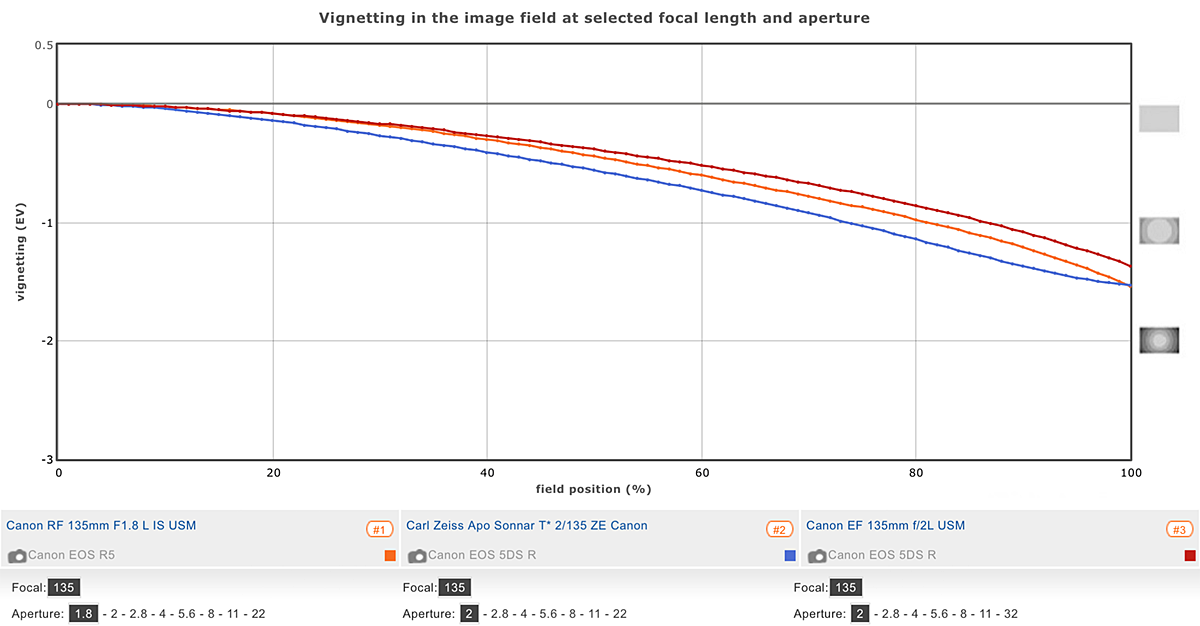
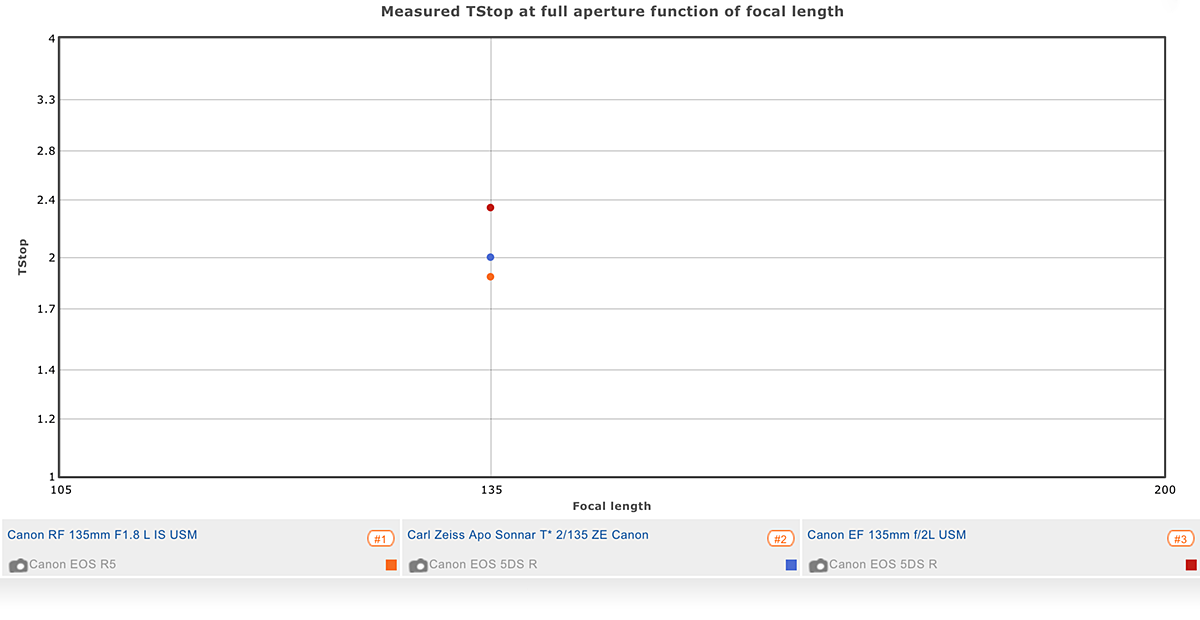
DXOMARK encourages its readers to share comments on the articles. To read or post comments, Disqus cookies are required. Change your Cookies Preferences and read more about our Comment Policy.